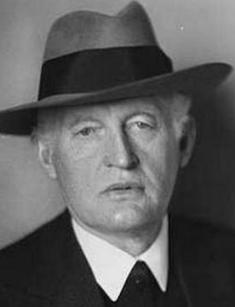
Edvard Munch: biography
Now people are more familiar with the painting Scream than with the life story of the Norwegian artist. His life, dark and painful, was filled with death, mental disorders, disappointment. During his last days, Edvard Munch left an entry in his diary:
"Illness, madness, and death were black angels flocking to my cradle to accompany me throughout my life."
Childhood and youth
Edvard was born on 12 December 1863 in the Norwegian city of Løten in the family of Christian Munch and Laura Catherine Bjølstad. The boy had an older sister Johanna Sofia and two younger ones-Inger Marie and Laura, and a brother Andreas. The future artist spent his childhood being on the move: partly because of Christian's profession as a military doctor, partially in search of cheaper housing.

Although the Munch family lived poorly, they were joined by influential creative personalities. So, a distant relative was the artist Jacob Munch. The world remembers Edvard's grandfather as a talented preacher, and Christian's brother, Peter Andreas, was an outstanding historian.
When little Edvard was five years old, his mother died of tuberculosis, and her sister Karen started taking care of the family. Christian, being a religious man, after the death of his wife, fell into fanaticism. He told his sons and daughters blood-chilling stories of hell, and Edvard often had nightmares about it. To escape from disturbing visions, the boy started drawing. Even then, his sketches looked terrific.
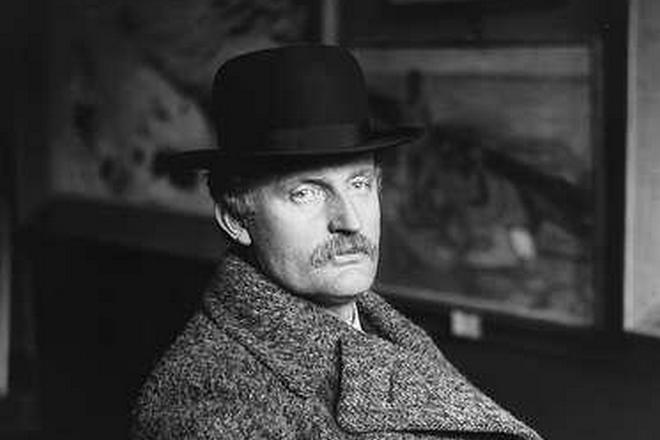
In 1877, Edvard's older sister, Sophia, died of tuberculosis. The young man was close to her, so he could hardly cope with this loss. The sad event became the reason for his disappointment in religion. In the diary, Munch recalled that his father "walked up and down the room, prayerfully clasping his hands," but this did not help the girl recover. Days spent with a dying sister, later were reflected in the paintings The Sick Child and Spring.
One way or another, different diseases followed Munch's family. Shortly after Sophie's death, Edvard's other sister, Laura, began acting strangely. She was often anxious, threw tantrums; other days she sat quietly and did not talk to anyone. She was diagnosed with schizophrenia.

Christian saw his son as an engineer, so in 1879, at the age of 16, Edvard entered a technical College. Physics, chemistry, and mathematics were easy for him. Despite the success, a year later, the young man dropped out, deciding to become an artist. The boy's father did not support his initiatives: he thought that it was vulgar to keep oneself busy creating paintings. Despite the protests, in 1881 the young painter entered the Royal School of Art and Design in Kristiania (today's Oslo).
In 1883, the name of Edvard Munch was first heard in Norwegian society. As his creative debut, the expressionist presented the Study of a Head. With this began the formation of the great artist.
Painting
In subsequent years, Munch repeatedly participated in exhibitions, but his work was lost among the brightness of shades and loudness of other artists' names. In 1886, Edvard presented the painting that was close to his heart, The Sick Child, and received a flurry of negative reviews. In one of the local newspapers, there appeared such a review:
"The best we all can do for Edvard Munch is to walk silently past his paintings. Munch's paintings significantly reduced the intellectual level of the exhibition."
The reason for the criticism was the apparent incompleteness of the work and formlessness. The young artist was accused of unwillingness to improve the technique and develop.
And Munch considered The Sick Child a breakthrough. 11-year-old Betzy Nilsen posed for him as a model. Once she turned to Edvard's father for help — her younger brother broke his leg. The girl was so nervous and beautiful with flushed, tear-stained eyes that the young painter asked her to pose for him.
After harsh criticism Edvard ceased to be sincere, his painting became uninteresting and prim. A year later, in 1889, he tried to tell the story of his sister again, in the picture named Spring. Creating it, Munch acted as an impressionist: one can see the curtains swaying and feel the sunlight pouring out of the window.
On the canvas, the summer day is contrasted with the oppressive atmosphere that reigns in the room. The red-haired girl, leaning back on the pillow, looks longingly at the older woman, she holds the medicine in her hands. There are no bright colors in the clothes; it looks like a mourning dress. One feels that soon, death will knock at their door.
At the end of 1889, when Munch went to study in Paris, he got the news of his father's death. The artist fell into depression, cut ties with his friends. This tragedy became a crucial element in the work of the expressionist. He wrote in his diary:
"No longer shall I paint interiors with men reading and women knitting. I will paint living people who breathe and feel and suffer and love."
In memory of his father, Edvard painted Night in St. Cloud. In the apartment, flooded with night light, a man sits at the window. Modern art critics see this image as Munch himself and his father, waiting for death.

Returning home, the artist began working on a series of works, which later received the name The Frieze of Life: a Poem about Love, Life, and Death. In it, Munch wanted to reflect the stages of human evolution, from birth to death. The cycle includes key works: Madonna, Scream, The Dance of Life, Ashes. A total of 22 paintings, divided into four groups: Seeds of Love, The Flowering and Passing of Love, Anxiety, Death.
The Frieze of Life also includes the Melancholy painting, created in 1881. Critics did not accept it with enthusiasm but noted that Munch found his style — bright outlines, simple forms, and dim light in all works. The complete cycle was first introduced in 1902.
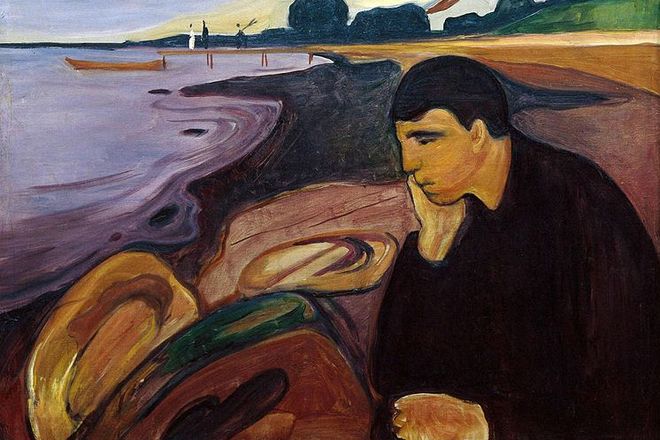
In the works of Edvard Munch, there are more than one hundred paintings, but the most famous of them was the Scream. In the usual edition, it depicts a humanoid creature; the sky is painted with bright orange-red shades. A scream from the lipless mouth of the humanoid melts the landscape. Two figures are visible in the ground. In his diary, Munch wrote:
"I was walking along a path with two friends – the sun was setting – suddenly the sky turned blood red – I paused, feeling exhausted, and leaned on the fence – there were blood and tongues of fire above the blue-black fjord and the city – my friends walked on, and I stood there trembling with anxiety – and I sensed an infinite scream passing through nature."
Under the impression of what he saw in 1892, the artist created the artwork Despair. On it, instead of that creature which became a popular visitor of Munch's paintings, he captured a man wearing a hat. A year later Munch sketched a humanoid in pastel, then painted it in oil. Later, two more versions were added to these paintings. The painting of 1893, which is on display in the National Museum in Oslo, is the one that is easily recognized even by people that have nothing to do with art.
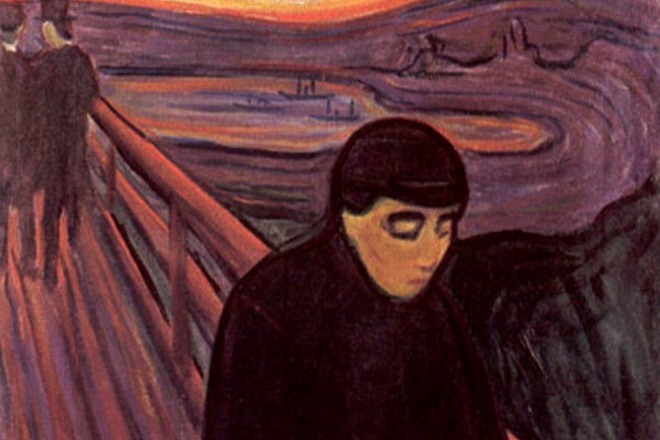
Art historians have found a place where Edvard could "see" the picture. A fun fact: before, this place was located near the largest slaughterhouse and mental hospital in Oslo. The art critic specializing in Munch's work noted:
"It was said that the cries of slaughtered animals, mixed with the cries of the mentally ill, were unbearable."
Hence, perhaps, came "an endless scream passing through nature."
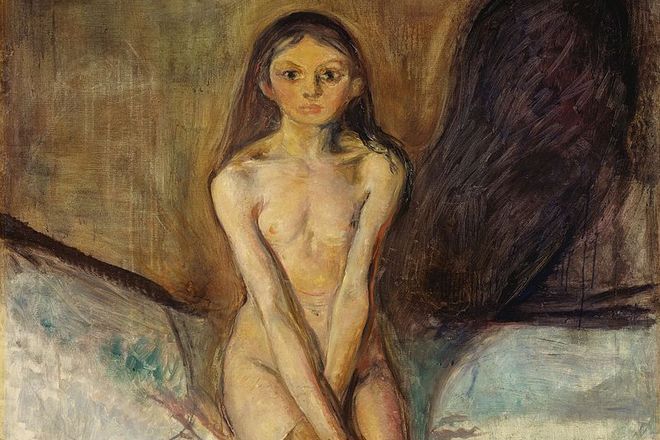
The year 1894 was marked by the appearance of two works — Maturation and the Girl and Death. Both paintings combine contrasting phenomena. Thus, in Maturation, a scary shadow hung over a young, fragile girl who was afraid of her nudity.

In Girl and Death, a plump, beautiful girl kisses skeletal death, accepting it as her best friend. This opposition is characteristic of modernity.
Munch created paintings in different genres: portrait, landscape, still life. In later years his work became rough, and the stories simple. Often in his paintings, there were farmers and fields.
Personal life
Edvard Munch was not married and had no children. However, there is information about three of his affairs.
In 1885 he met Emily "Millie" Ihlen Thaulow. The girl was married, so she did not take the young man seriously, but did not reject him either. Edvard took love seriously: for him to have an affair with a married woman was to cross all religious barriers. Not wanting to be Millie's second choice, Munch gave up the idea of winning her over.

In 1892, the artist met Stanislaw Przybyszewski, a Pole by nationality, and his wife, Dagny Juel. The girl became a muse for Munch; he repeatedly used her image in paintings. The researchers admit the possibility that there was a love affair between young people.
The most painful was the affair with Tulla Mathilde Larsen, which began in 1898. At first, their relationship went well. Then the woman started to tire Munch with her obsession. In 1902, she felt the coldness of her loved one and threatened him with suicide. Frightened, Edvard came back to her.

A few days later there was a quarrel between them, during which Munch shot himself in the arm. According to the popular version, Tulla wanted to shoot herself, and the artist in an attempt to pull the gun pulled the trigger. The man was hospitalized, and the relationship ended.
Until his death, the personal life of Munch was not connected with any woman.
Death
The artist had poor health, but in 1918 he overcame Spanish influenza, which killed millions of people. In 1930, he was almost blind due to a hemorrhage in the vitreous body of the right eye but did not give up painting.

A month after his 80th birthday, in 1944, the artist died. His posthumous photo is kept in the Munch Museum in Oslo.
After the death of the expressionist, all the paintings were transferred to the state. Thousands of oil paintings and engravings today make up the main exposition of the Munch Museum.

References to the artist are found in art books and films. Thus, in 1974 the movie Edvard Munch was released, telling the story of the formation of the expressionist.
Paintings
- 1886 - The Sick Child
- 1892 - Despair
- 1893 - Scream
- 1893 - Death in the Sickroom
- 1894 - Madonna
- 1894 - Ashes
- 1895 - Vampire
- 1895 - Jealousy
- 1896 - The Voice (Summer night)
- 1897 - The Kiss
- 1900 - The Dance of Life
- 1902 - Four Ages in Life
- 1908 - Self-Portrait against a Blue Sky
- 1915 - By the Deathbed (Fever)
- 1919 - Self-Portrait after Spanish Influenza




